Sonic Treatment: 10 Best Albums of 2011
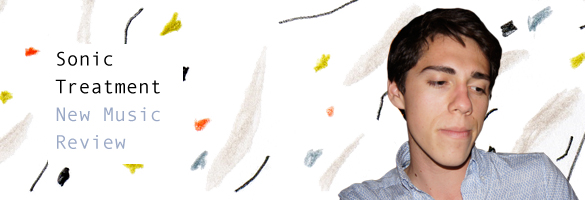
By Peter Hernandez
The year comes to a close with an array of synth-heavy development by some artists of independent persuasions, including some fascinating debuts. Saxophone has made a reemergence as a key instrument used in songs by Katy Perry and Lady Gaga, but always derived from artists rarely recognized, and always conceived as “outer sounds.” The artists included in this list are both new and familiar to me, and represent a personal connection rather than a particular formula for discovering what equates to one of the “best” albums of the year.
The sounds on this album are rich and with a warmth derived from years of growth and experimentation building on a sound conceived in early work with psych-rock band Ducktails, and with work on “Mare”, his previous album. The sound here is colder, more atmospheric, and less warm. The use of saxophone is particularly charming in this album, which complements Lynch’s acoustic guitar beautifully (see: “Water Wheel One”). The album manages to be simple and subtle, yet lush and dynamic, with beautifully structured songs like “Terra” (which features the greatest use of instrumentation on the album–the organ and saxophone at the beginning sounds like a sunrise). And of course, the album creates a distinctly futuristic element with heavy use of synths on “Canopy 1” and “Ground” which when paired with Lynch’s saxophone, create a sexy and eerie window into the future.
Julian Lynch: “Terra” by alteredzones
9. Bobby – Bobby
Partisan Records
Bobby’s debut full-length album evokes not only a somber sound quality but a general aesthetic that juxtaposes against the solemn qualities of what sounds like a well-organized jam band. The collective of musicians associated with Partisan Records is accompanied by the story of a fictional character named Bobby who appears to direct the songwriting and general direction of the band. Molly Sarle provides memorable vocals on songs like “Sore Spores,” beautifully harmonizing with Tom Greenberg of Twiglet fame. “Nap Champ” and “Groggy” are dream-inducing atmospheric progressions that draw me in each time. I listened to this album while bicycling through Golden Gate Park to my boyfriend’s house just before he moved out of the Richmond. The ride evoked such excitement in its ritualistic beauty–and it required something cinematic. I like that this album can encourage slowness, retraction, reflection, and a steady direction.
8. Trouble Books & Mark McGuire – Trouble Books & Mark McGuire
Bark and Hiss
This is a dream collaboration. The crowded quartet is creating a fantastic collage of looped guitars, hazy synths, and field or found recordings. The atmospheric synth tracks, paired with looping reverbed guitar, makes for the kind of music that I wish I made. The album experiments with epic guitar solos, like on “Song for Reinier Lucassen’s Sphinx”, and provides fantastic reflection on moments of tranquility. “The Golden Waste” features one of my favorites, “Me and Sundays / Bask in the glow of coffee in the afternoon.” This album aims to redirect one’s attention from the mundane into the beauty of the everyday, and to find meaning and purpose in fleeting moments. “Local Forecast” is a fantastic introduction to what Trouble Books provides to the collaboration–and can aptly be labeled hazy or groggy, but always lush and textured.
Trouble Books & Mark McGuire: “Local Forecast” by alteredzones
7. Bill Callahan – Apocalypse
Drag City
Bill Callahan’s second release under his own name continues to flee from any sound associated with Smog (and even the previous Callahan release) and embraces the sound of a singer troubled by life experience. “Oh, I am a helpless man / So help me” he says in “Baby’s Breath”. The title denotes a sort of retrospective and understanding of the end, and a wealth of experience. “Without work’s calving increments / Or love’s coltish punch / What would I be?” Callahan’s misery is compounded by the beauty of this album, in which subtlety is brashly contrasted against such extremes as “America!”, and yet is always retracted in songs like “Riding for the Feeling,” in which Callahan analyzes a present moment with such clarity that the listener feels it too.
Bill Callahan – Drover by marginalissimus
6. Twin Sister – In Heaven
Domino Records
Twin Sister is my crush. When I watched a video of Eric Cardona singing “Stop” on Yours Truly, I was astounded by his voice and composure, and Andrea Estella’s voice and refrained cuteness charms me every time I see her perform. This album features all kinds of wondrous moments: a dark synth-laden “Kimmi In a Rice Field” with chord progressions that sound as though they could split clouds and syncopate with heartbeats, yé-yé-esque instrumentation on “Gene Ciampi” that sounds like a Serge Gainsbourg and Brigitte Bardot collaboration, and funky synth meets heavy-flanger guitar disco on “Bad Street”. There is a longing that permeates these tracks, beginning with, “I’ll never get the chance to touch your hands / You’re so far away, it hurts so bad” in “Daniel”, and “If it were up to me, I’d never leave” in “Space Babe”. It’s romantic, endearing, and refreshing indie pop.
Twin Sister – Bad Street by DominoRecordCo
5. Destroyer – Kaputt
Merge Records
Dan Bejar’s ninth LP wandered with me through the year. It accompanied me since its release. Its romantic qualities, sustained throughout each song in the album, paired with its dramatic and varied use of genres like acid rock, folk, and ’80s glam, and its crescendoing and heavily echoed trumpet, and brash saxophone, creates a beautiful listen that expands on sounds so familiar, but so exotic to Bejar. “Suicide Demo for Kara Walker” is a beautiful reflection on racial tension with reference to the Brooklyn-based artist whose silhouette pieces explore identity. Her ethos parallels Bejar’s personal exploration wonderfully. “Is it still the invisible man you are consorting with, woman?” It’s a beautiful listen with climactic moments and the intoxication of the saxophone revival.
Destroyer – Kaputt by DBF Music
4. Julia Holter – Tragedy
Leaving Records
This was one of the most challenging, but awe-striking listens of the year, for a multitude of reasons ranging from its contemporary sound to its subtlety. Julia Holter provides a mastery of field recording meets lo-fi glam new wave (see “So Lillies”), an orchestration of field recordings that transforms into what should be remixed into a club anthem, and Holter’s distorted and mesmerizing voice on “Goddess Eyes”. Her music is refrained and masterful, cinematic and stagnant. It is tragic in moments like “The Falling Age”, in which the ambient drone creates the atmosphere of plunder, and ecstatic in moments like “Celebration”, in which Holter’s drum machine invokes a deep rhythm paired with a drone that is this time uplifting, then doused with a wailing saxophone. Holter has maintained the mystery and mastery of contemporary pop sounds that are paired with the atypical boundaries of the avant-garde. It is no overstatement like the Zola Jesus or Grouper of today. This record is a journey.
Julia Holter – Goddess Eyes by frontpsych
3. High Places – Original Colors
Thrill Jockey
High Places has taken a direction to dark, spacious dance music reverberating past all that they have built upon. Their 2010 release, “High Places vs. Mankind” saw the emergence of house music, but this album solidifies that aesthetic masterfully with fantastic production value. Mary Pearson’s lyrical direction contemplates upon growth while sounding distinctly mature (“Progress has a different meaning now / The changes have a different weight / Seasons are growing shorter now / Years pass at a different gait,” Pearson sings in “Twenty Seven”). Rob Barber’s percussive instinct has developed past syncopation of previous records–his percussion now yields a certain sensitivity in each measure that fully crescendoes in ways that Pearson’s voice doesn’t. They are beautiful complements–the perfect pairing. “Altos Lugares” tallies upon the scoresheet of beautiful dance anthems penned by the duo, while songs like “Banksia” and “Sophia” create dub Euro-dancefloor gems that present Barber and Pearson’s abilities skillfully.
High Places -The Pull by theantidote
2. Cass McCombs – Wit’s End
Domino Records
Cass McCombs’ lyrics are driven with such emotion, yet they are conveyed laconically and often without force. His voice achieves a clarity that I rarely discover among country or rock musicians, and paired with his lugubrious guitarwork, it makes for a heartwrenching listen. This album proves that McCombs is living up to the despair that he seems to convey with his enigmatic and bitter personality, rather than using it as a crutch to idolize oneself. When the San Francisco Chronicle asked him what his tombstone would read, he said, “Home at last.” “County Line” features his angelic tenor vocals at its best, and it remains his most effective listen, with the greatest progressions that accompany, “You never even tried to love me.” There is apparent inspiration provided by Leonard Cohen. Although succeeded by the release of “Humor Risk” later this year, “Wit’s End” remains his most powerful release to date. McCombs has a deep and tortured soul, and “Wit’s End” is the greatest introspection to these torments that his listeners are provided with.
Cass McCombs – County Line by PitchPerfectPR
1. Planningtorock – W
DFA Records
Janine Rostron has recreated herself with the release of “W”, an altogether heavily-conceptualized reflection on identity and sexuality. “W”, a character palindrome or a mirror as a letter, best symbolizes Rostron’s ethos in this album. “I know my feelings,” she begins with on “Doorway”, providing a manifesto for the ideas and feelings she provides in this release. I truly love the instrumentation of this album, which features chamber strings and orchestral percussion on “The One”, pizzicato strings on “Living It Out”, saxophone throughout, and Rostron’s voice distorted to the degree of distancing her recorded self from her true self. “Milky Blau”, Rostron’s favorite song from the record, is a beautiful, floating, dance-inducing piece that syncopates saxophone with plucking violin strings. It’s an altogether beautifully avant-garde piece that suits DFA for its dance sensibilities.

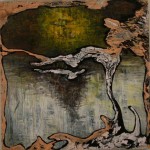
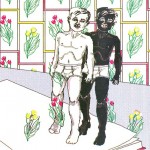
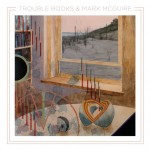
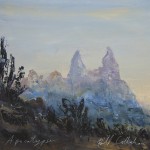
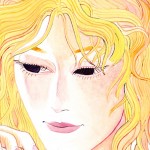
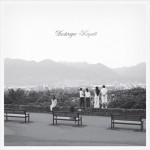
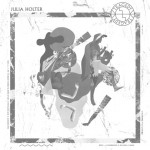
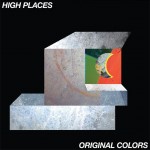
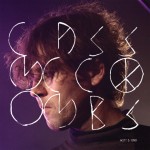
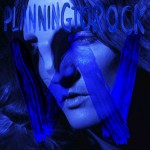
Comments are closed.